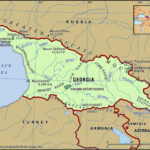George Washington, a pivotal figure in American history, served as the first President of the United States and played a crucial role in the nation’s founding. Understanding where George Washington lived throughout his life provides valuable insight into his personal journey and the development of the United States. From his childhood home to the presidential residences, let’s explore the significant places George Washington called home.
Washington’s story began on February 22, 1732, when he was born to Augustine and Mary Ball Washington. His formative years were largely spent at Ferry Farm, situated on the Rappahannock River in Virginia. This riverside farm served as his primary residence during his childhood. Life at Ferry Farm was typical of the time, although it’s important to acknowledge that like many landowners of the era, the Washington family relied on enslaved labor to maintain their property. Upon his father’s death when George was eleven, he inherited enslaved people, becoming a slave owner himself at a young age. This inheritance impacted his educational path, leading him to focus on practical skills and self-study rather than formal schooling like his half-brothers. He assisted his mother with managing the farm and received local education in Fredericksburg, demonstrating his early connection to the Virginia landscape.
As a young man, George Washington’s ambition and connections led him to a position as the surveyor for Culpeper County at the age of seventeen. This role was more than just a job; it was an opportunity for adventure and financial stability, allowing him to explore and potentially acquire land in the westward expanding colonies. His surveying experiences instilled in him a deep belief in the importance of westward expansion, a conviction that would shape his vision for the future of the colonies and the nascent United States.
The mid-1750s saw Washington involved in military and political affairs. While not a permanent residence, Fort Necessity marks a significant location in his early military career. In 1754, a young Major Washington faced a setback at Fort Necessity during a mission to assert Virginia’s claim over the Ohio Valley against the French. This early military endeavor, though ending in surrender, contributed to his growing public profile.
A turning point in his personal life came with his marriage to Martha Dandridge Custis on January 6, 1758. Martha, a wealthy widow, brought not only companionship but also significant land and resources into their marriage. This union solidified Washington’s position as a prominent Virginia planter and led him to Mount Vernon, which would become his most beloved and enduring home.
Mount Vernon became synonymous with George Washington. He dedicated himself to managing and improving this vast plantation on the Potomac River for decades. From 1759 to 1775, while serving in the Virginia House of Burgesses, Mount Vernon was his constant anchor. He focused on adopting advanced farming techniques and expanding the plantation’s operations, relying heavily on the labor of an increasing enslaved community. Mount Vernon was not just a residence; it was the center of his agricultural and social life.
The American Revolution thrust Washington onto the national stage. As Commander-in-Chief of the Continental Army from 1775 to 1783, his “home” became the military camps and battlefields where he led the fight for independence. While not a traditional residence, these locations were where he lived and worked tirelessly for eight years, enduring hardships alongside his troops. His leadership during the Revolution cemented his status as a national hero.
Following the Revolutionary War, and after a brief period of retirement back at Mount Vernon, Washington was called upon again to serve as the first President of the United States. As president, he resided in the presidential residences of the temporary capitals. From 1789 to 1790, the capital was in New York City, and the presidential residence was located there. Subsequently, from 1790 to 1797, the capital moved to Philadelphia, and Washington resided in the presidential house in Philadelphia. These presidential homes, though temporary, were centers of national governance during his two terms. It is important to remember that even in these presidential homes, the labor of enslaved people, like Ona Judge and Hercules, sustained the household.
After retiring from the presidency in 1797, Washington eagerly returned to Mount Vernon. This marked his final and perhaps most cherished period at his beloved plantation. He spent his last years overseeing Mount Vernon and enjoying a more private life. It was at Mount Vernon that George Washington passed away on December 14, 1799.
In conclusion, when considering “Where Did George Washington Live,” we see a journey through various significant locations. From his childhood at Ferry Farm, his beloved Mount Vernon plantation, to the presidential residences in New York and Philadelphia, each place reflects a different chapter in his life. Mount Vernon remains the most iconic and representative home of George Washington, a testament to his life as a planter, revolutionary leader, and the first President of the United States. Exploring these residences provides a deeper understanding of the life and times of this foundational figure in American history.

